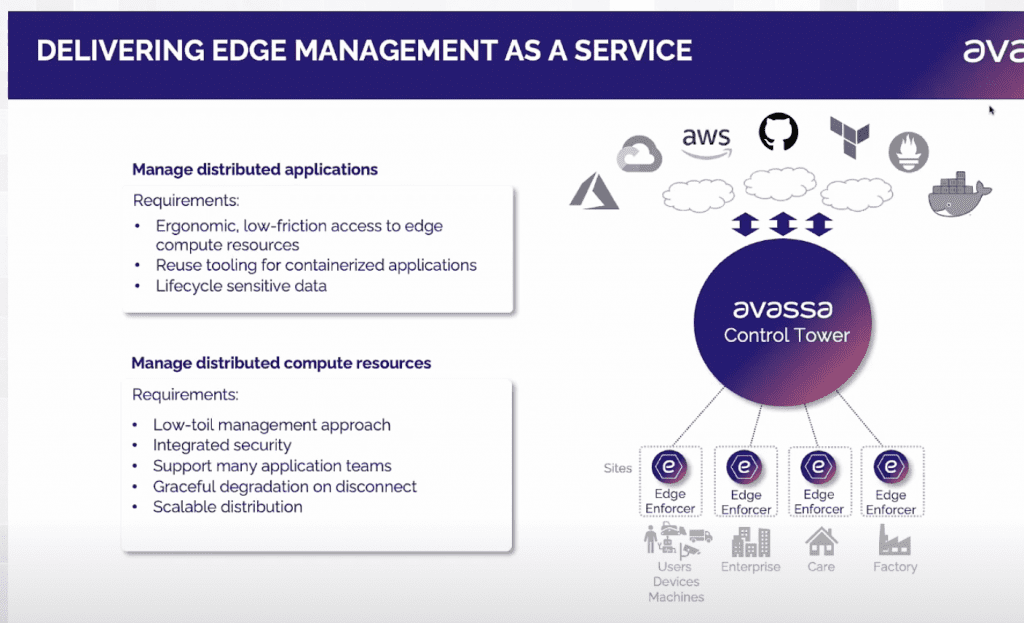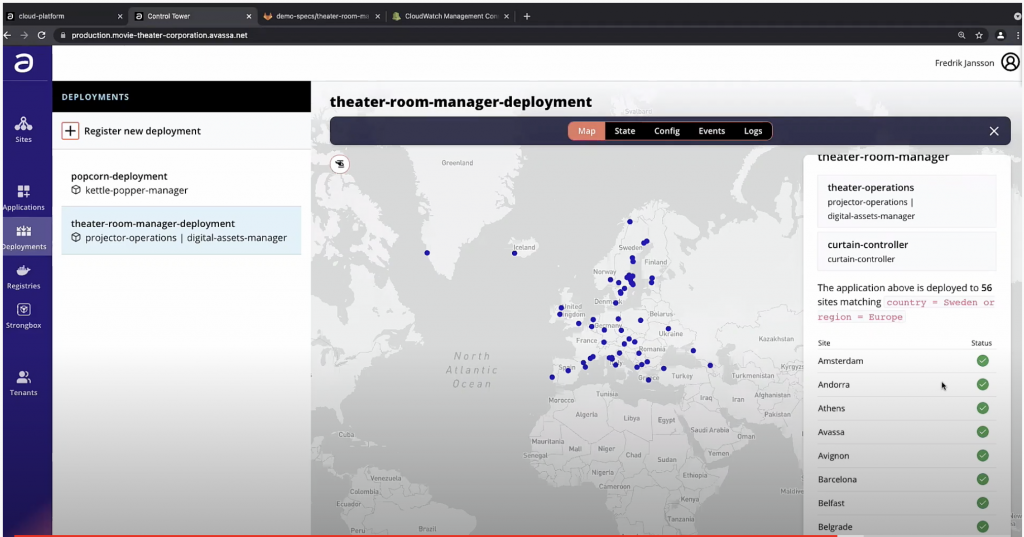
Managing Applications at the Distributed Edge Cloud with Avassa
Edge computing is, of course, a form of cloud computing. But it can be helpful in a way to think of edge computing as the polar opposite of cloud computing. And understanding that can be a big help in grasping what Avassa is trying to do with its edge platform.
Avassa presented at Tech Field Day 24, and laid out its vision, starting with a comparison of the two cloud paradigms. The public cloud, said Carl Moberg, Avassa CTO and cofounder, has a massive number of computers in a data center; fast and cheap networking owing to the centralized location; tools made for use in that specific environment; and, maybe most important for the sake of comparison, no location issues.
For the edge, those factors are reversed: there may be just a few or even a single, host in a location; there are many, many locations; applications and data are distributed across those locations, requiring different tools; the network may be spotty and unreliable; and the locations could be, well, anywhere—a cruise ship in the Pacific, a light pole at a Wichita, Kansas, intersection, or a sawdust-clogged server in a furniture factory.

This has huge implications for management. In the public cloud, doing things like deploying and patching apps is a relatively simple matter (although the ginormous scale of a data center poses its own issues).
On the periphery, often far, far away from a data center, management is orders of magnitude harder, since conditions at each location can vary dramatically. Remember the old retail sales adage that the three most important factors when considering a store site are “location, location, location”? That applies to the compute edge as well.
Avassa’s Edge Management-as-a-Service solution was built with location in mind. There are two primary components: the Avassa Control Tower and the Edge Enforcer (see Figure 1).
The Control Tower is the control plane. The Edge Enforcer, which is installed on each host, has two main roles: it calls home to its Control Tower, identifies itself, and receives necessary configuration details for apps (it can also form a cluster with other local Edge Enforcer instances for resilience). It also handles application placement and scheduling.
Together, the Control Towers and Edge Enforcers provide a complete management package for edge application lifecycle, monitoring and observability, security, resource consumption, and so on. Avassa also has multi-tenancy abilities with autonomy zones and strong security features. This will make it easier, via APIs, to integrate with third-party software.
An incredibly thorough demo for Tech Field Day attendees showed Avassa’s prowess in action. Having created a fictional movie theater company with more than 100 theaters globally, Avassa went through common scenarios that will be familiar to any admins who have had to create and manage edge applications, including:
- Setting up virtual infrastructure on each edge site, including Edge Enforcer
- Deploying apps to every site in a simple, automated way
- Monitoring each app and site for problems—this included collecting data via Control Tower, data which was then passed to AWS CloudWatch for analysis
- Adding application tenants, and ensuring proper security controls like an inability to see host information
- Reacting in real time to a potential security breach and how the damage was immediately limited and remedied

Figure 2 shows an app being deployed to edge devices via the Avassa Control Tower. It was an impressive demonstration of the potential for using edge applications at massive scale. With the explosion of edge computing for use cases like the Internet of Things, factories, and retail, it’s clear that a better way to create and manage those edges is necessary, and available yesterday.
Avassa isn’t a household name at this point, but I believe that’s going to change once word gets out about the company’s offerings.